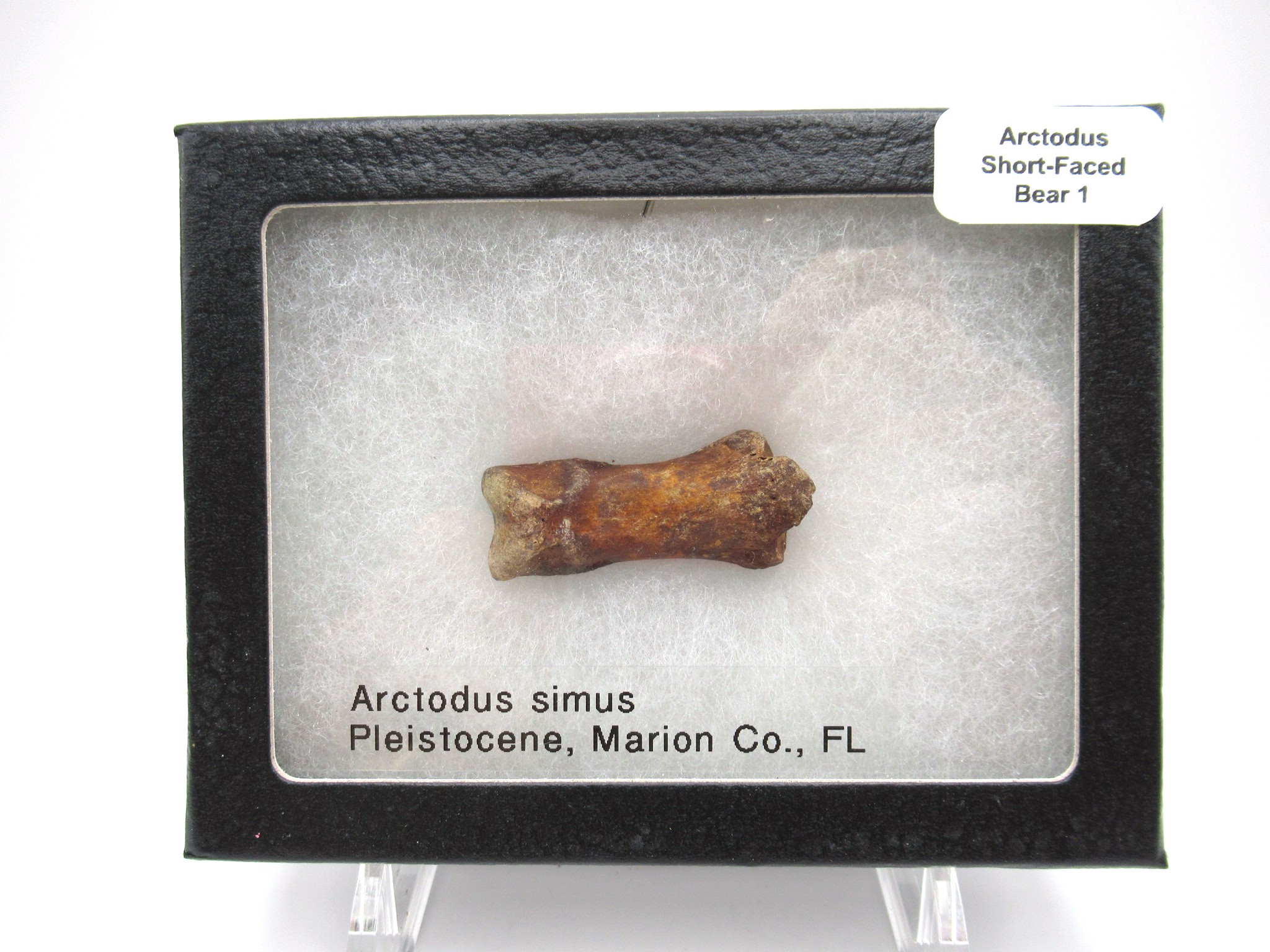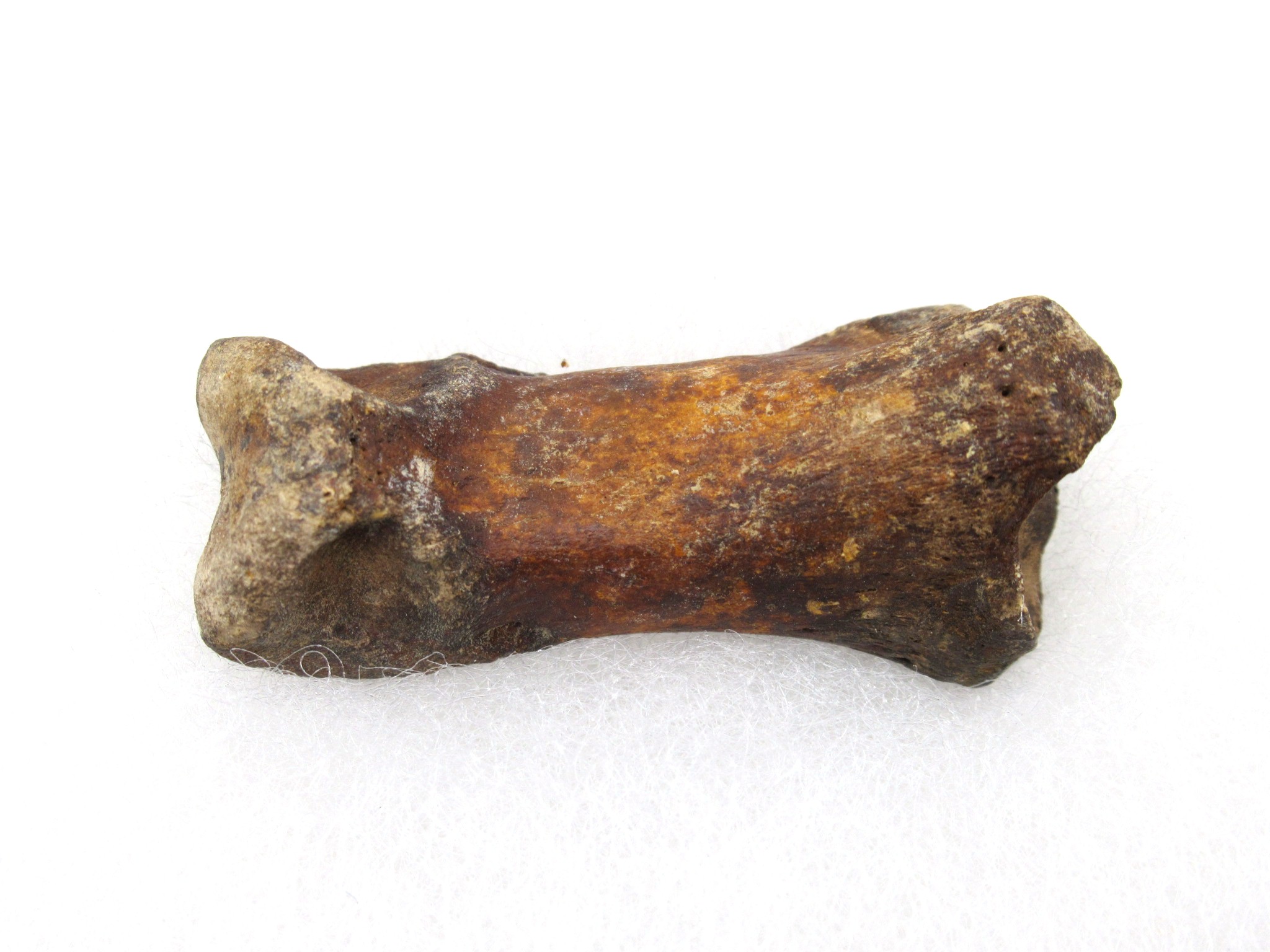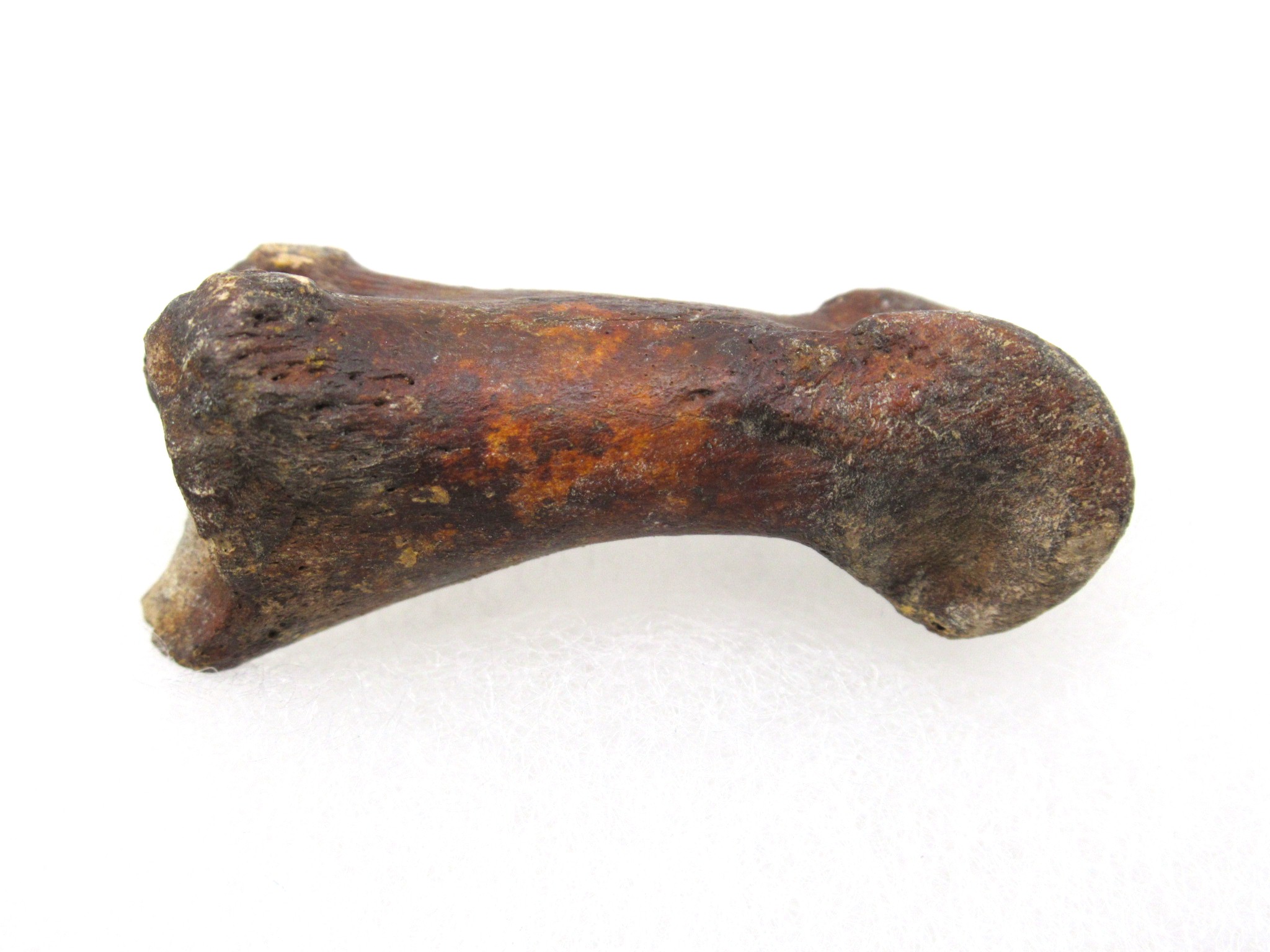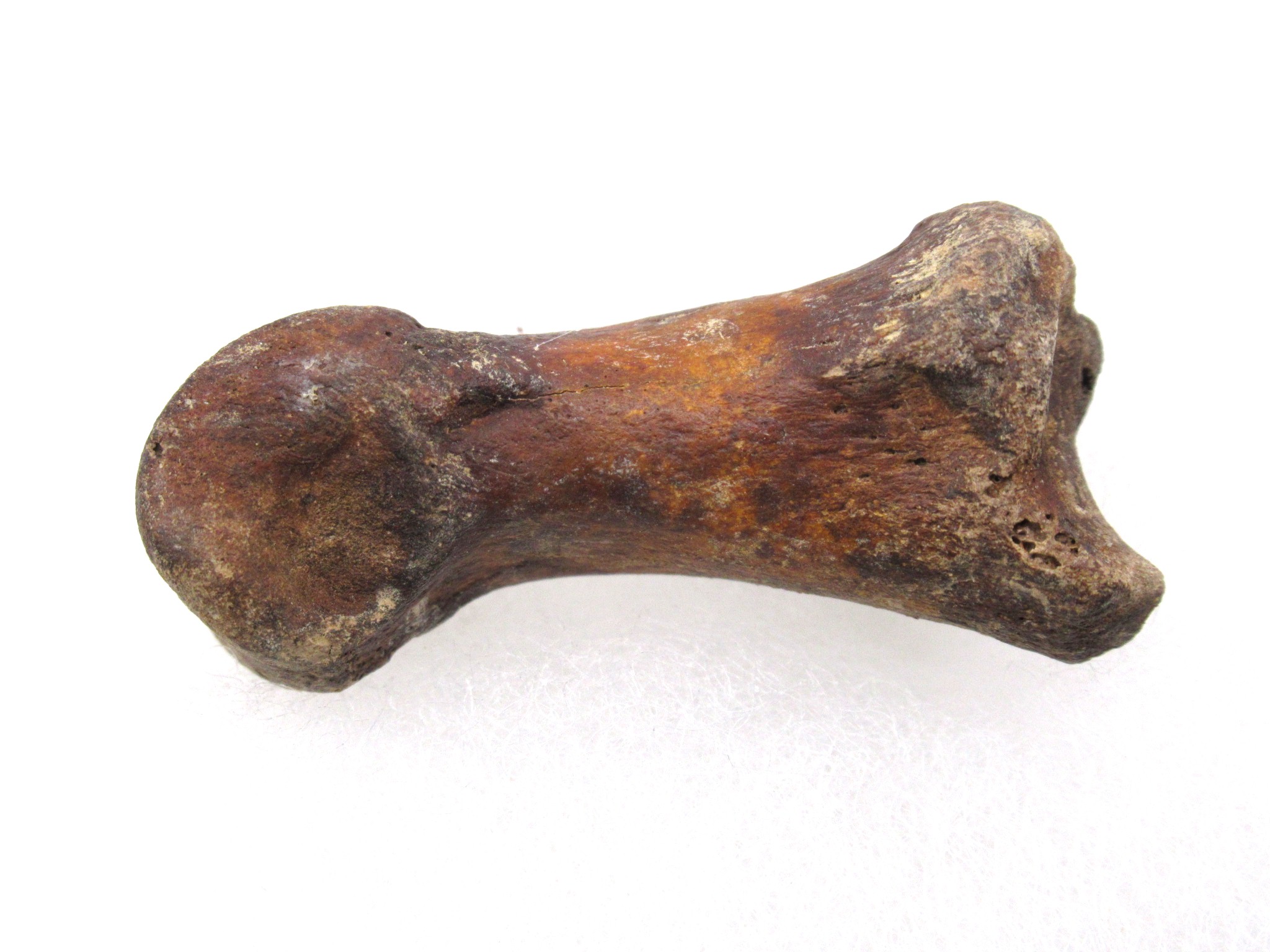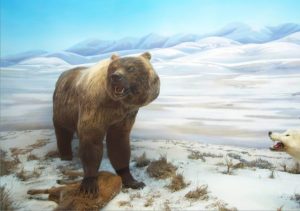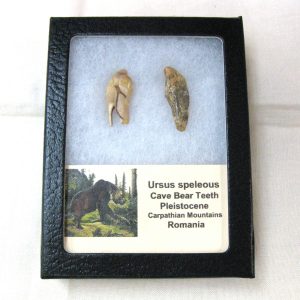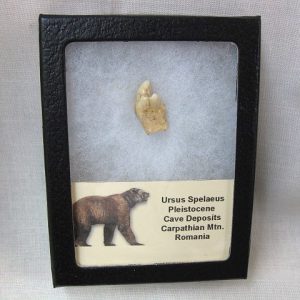Description
- Bear Fossils for Sale
- Arctodus simus
- Pleistocene Age
- Marion County
- Florida
- This toe bone measures 1.53″ long. Short-faced Bear fossils are extremely rare to obtain. This specimen will come in a 3.25″ x 4.25″ Riker Mount as Shown
Arctodus is an extinct genus of short-faced bear that inhabited North America during the Pleistocene (~2.5 Mya until 12,000 years ago). There are two recognized species: the lesser short-faced bear (Arctodus pristinus) and the giant short-faced bear (Arctodus simus). Both species are relatively rare in the fossil record.
A. pristinus was largely restricted to the Early Pleistocene of the eastern United States, whereas A. simus had a cosmopolitan range, with most finds being from the Late Pleistocene of the US, Mexico and Canada.
A. simus evolved from A. pristinus, but both species likely overlapped in the Middle Pleistocene. Of these species, A. simus was larger, is known from more complete remains, and is considered one of the most charismatic of North America’s megafauna.
The Short-Faced Bear was 5½ to 6 feet at the shoulders while on all 4 legs. On 2 legs, he stood 11 to 12 feet tall. That’s 11 feet, 2 inches standing up looking at you or peering down through a basketball hoop. He could look up and bite a branch 12 feet high. He could reach up 14½ to 15 feet.
Archeologists estimate most giant short-faced bears, including females, to weigh 1600 to 1900 pounds. Some estimates exceed a ton.

